Your campaign landing page is more than a digital doorway – it’s the handshake that starts relationships with your next customers. But in the Life Sciences and Biotech industries, where audiences are both highly specialized and deeply sceptical, a well-optimized landing page isn’t optional; it’s essential.
Here’s the kicker: Businesses with over 40 polished landing pages generate 12 times more leads than those with fewer than five, according to Hubspot’s research of 4,000 businesses and their lead generation best practices [1]. That’s not just an edge – it’s a competitive advantage.
Whether you’re targeting researchers, clinicians, or executives, the secret to landing page success in our sector lies in usability, trust and simplicity. With Qincade’s Landing Page Optimization Checklist as your guide, let’s first explore proven strategies that can transform clicks into conversions.
Understand the humans behind the clicks
Your audience aka. scientists (mostly) are excited by data, and so it follows that your approach to understanding them is linked to looking at numbers. Tools like Google Analytics (GA4), Hotjar, Mouseflow, Google Optimize, Unbounce etc.and even LinkedIn demographics offer actionable insights into what your visitors need.
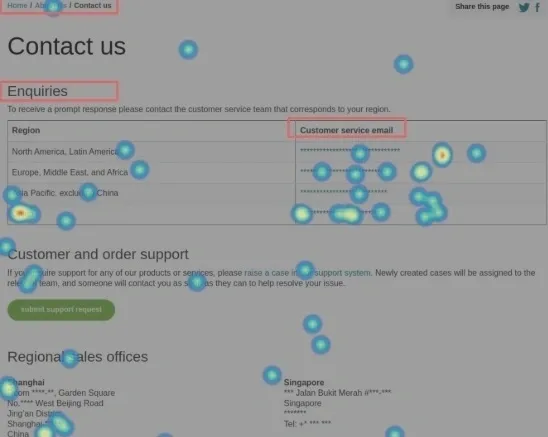
- Top tip: I like to use heatmaps and other reports on scroll depth and click density from tools like Hotjar or Mouseflow to see where visitors linger and what they completely ignore. This is especially useful if you are optimizing an existing page and not building anew since you have some proof from your audience to work with. For example, it’s often really easy to see if users are not reaching your CTAs or if they are confused or frustrated (rage clicks). I like to combine Hotjar-type information with data from GA4 to understand better whether users are engaging deeply or leaving too quickly and which channels are driving users to the page. In addition, goal completions or ecommerce conversions help me identify drop-offs in funnels and determine if CTAs align with user intent.
Craft headlines that get straight to the point
Your headline and subhead aren’t just copy -they’re your elevator pitch and your SEO passport. Accuracy, relevance, and a touch of urgency are key here.
Don’t forget the visuals too. Since we’re tackling the importance of headlines here, the imagery is also critical. No matter how dull a product or service is, it should have a landing page with a visual impact. The hero section is key. If you are going for a full-screen image or background, make sure to keep an eye on page speed load times and optimize for responsiveness. If you’ve decided to use video, be careful with loading times and make sure that users aren’t distracted from the message you really want to get across. Product images can do well, but our own data suggests that showing images with people in them on B2B landing pages works best.
- Pro tip: Swap out vague statements like “Cutting-edge biotech solutions” for specifics: “Achieve 25% faster results with our advanced assay kits.” Do keep in mind that your H1 heading should always include the keywords that you want to rank for.
- Data says: Headlines with specific, benefit-driven claims see a 307% lift in engagement [2].

Establish trust with evidence
Trust signals – like testimonials, certifications, and data-rich case studies – are a must. Why? Because scientists trust the opinion of peers, if you are appealing to scientists, you need to bring their voices out of the shadows and onto your web pages. Their voice will resonate with their peers in a way that your business simply won’t.
- Pro tip: Try to feature clear, quantifiable results in testimonials: “Using this solution reduced instrument downtime by 40%.” Although, we know this is not always easy to do when scientists are quite particular about what they want to say.
- Data says: 92% of B2B buyers trust peer recommendations over any other form of marketing [3].
Simplify and streamline for the highest success rates
A cluttered landing page distracts from your message and adds to user choice fatigue. Use design and simplicity to direct focus and encourage action.
- Pro tip: Remove navigation menus to reduce bounce rates. Instead, use white space and bullet points to guide the reader. Of course, as soon as users click out to another one of your pages, they get their navigation back. Don’t forget that there’s still space in the footer to add secondary CTAs and links.
- Data says: Simplified pages without a navigation bar can double conversion rates. In some published case studies, A/B tests on this single change have returned interesting results such as increases in sign-ups by 100%. We’d recommend you test it for your own audience and site though.
Turbocharge your Call-to-Action (CTA)
Your CTA is where interest turns into action. It should be impossible to miss and irresistible to click.
- Pro Tip: Use high-contrast colours and actionable text, such as “Get your Trends Report.” You’ll also notice when looking at your on-page optimization data from tools like SEMrush and similar, an error like ‘Links with non-descriptive anchor text’. These can run into hundreds for older sites, and this means that your CTAs are not customized, aka that you have many that simply say ‘download now’ and so on. That’s okay, and sometimes it’s the only CTA to use that makes sense, it’s also not a critical issue for your website overall, but it contributes to a better user experience if your links and navigation are descriptive, conveying that link’s target.
- Data says: Personalized CTAs perform 202% better than generic ones [4]. Personalized calls-to-action are CTAs that are tailored to each individual user’s interests, preferences, and behaviour. If you are using Hubspot, then check out its CTA tool that allows you to adjust CTAs to anonymous and first-time page visitors based on location, device, referral source, or language.
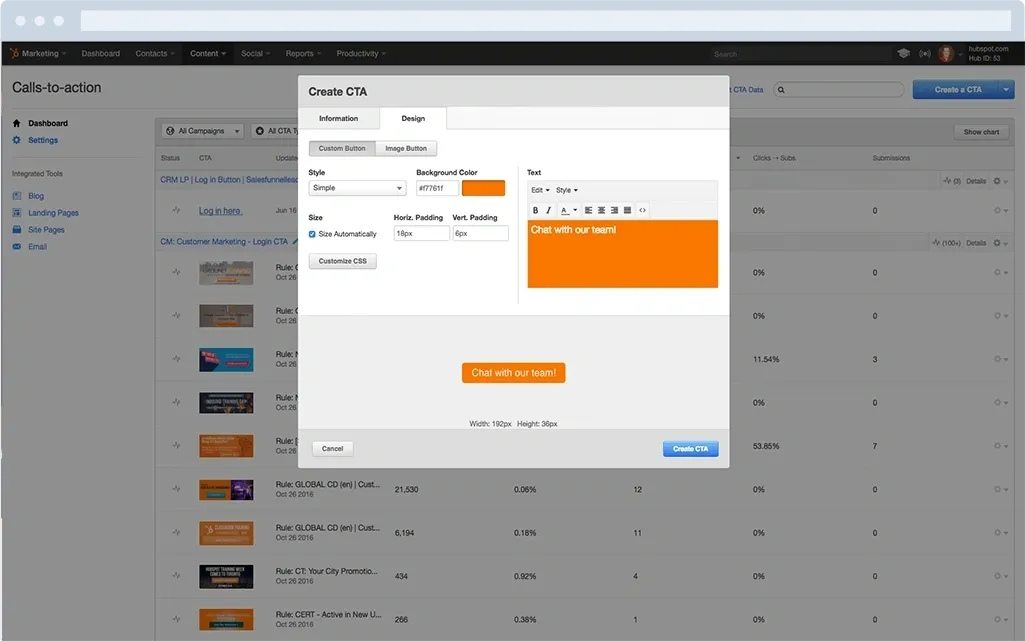
Speed is of the essence
Life Sciences and Biotech professionals are busy. A slow-loading page doesn’t just lose attention – it loses trust. Page speed is especially critical for mobile users, 53% of visitors leave a page if it takes more than 3 seconds to load. This highlights how important fast-loading websites are for keeping visitors engaged.

- Pro tip: Use tools like Google PageSpeed Insights to identify bottlenecks. Compress images, minimize scripts, and use a content delivery network (CDN).
- Data says: A one-second delay in page load times can reduce mobile conversions by 20% [5]. A study by Portent [6] found that pages loading in 1 second see a 40% conversion rate, dropping to 34% at 2 seconds and 29% at 3 seconds. By the time the load time reaches 6 seconds, the conversion rate hits its lowest level. Naturally, certain pages hold greater significance – checkout, login, and home pages should be your top priorities. Beyond these, fast-loading product category pages have the greatest impact on sales due to their high consumer-intent traffic.
Optimize for mobile-first experiences
B2B users are still predominantly using desktops for research and initial engagement with other businesses, but the rise in popularity and adoption of mobile-optimized platforms like LinkedIn means that B2B mobile traffic is growing, particularly for top-of-funnel activities (e.g., lead magnet downloads, initial research).
Consider, for example, how directing booth attendees at a tradeshow to one of your landing pages needs to work for them in that moment (with potentially slower than expected Wi-Fi speeds not helping the process) or how critical responsiveness and loading speed is, for those doing some quick product research on the bus or train or standing in a queue at Starbucks waiting for their order.
- Pro tip: Use responsive design principles to adapt layouts and forms seamlessly across devices.
- Data says: 57% of users won’t recommend a business with a poorly designed mobile site [7].
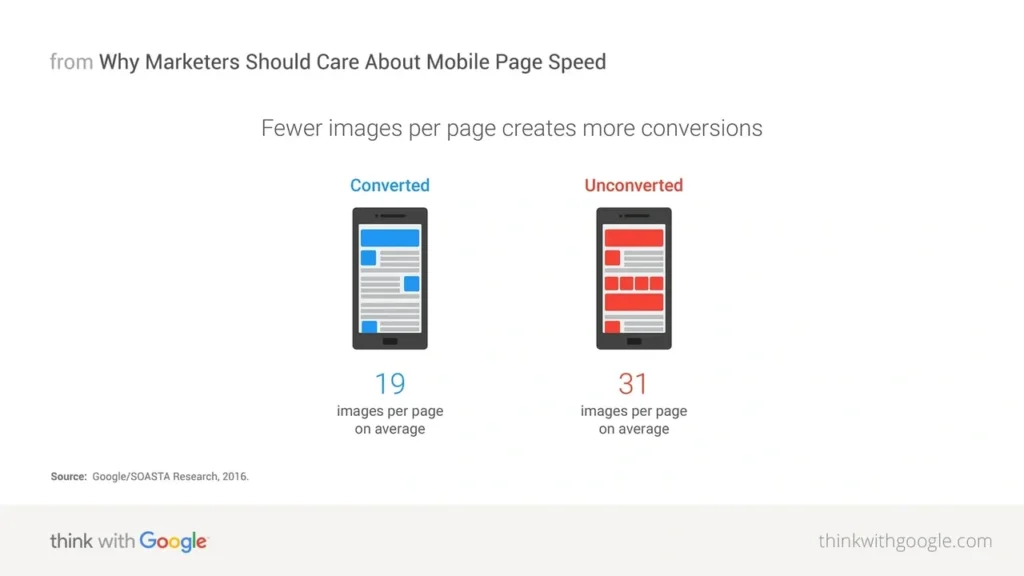
Don’t forget about your lead capture forms
Lead capture forms are your conversion gateway. Too many fields and you’ll lose those leads. Too few and you might miss key data needed internally to nurture them. This is also connected to an internal conversation or set of conversations that you need to be having with your sales team to make sure that once the leads come in, they are scored for follow-up appropriately and as quickly as possible. At Qincade we offer marketing and sales alignment advice or workshops, as well as work around structuring your lead management process, helping you select attribution models and more. More detail on our Lead Nurturing services.
- Pro tip: Limit form fields to as few as you can get away with. There’s a balance to strike here between how much data you need to gather for you and your sales team to handle leads efficiently versus putting users off by asking them to completing long forms.
- Data says: Recent OptiMonk conversion rate optimization case studies [8], show that strategies deployed by various brands like simplifying checkout pages and reducing form fields resulted in significant conversion rate improvements.
Some conversion benchmarks to chew on
- An analysis of over 74 million visitors across 10 industries found that the average conversion rate for landing pages is 4.02%. [9]
- B2B landing pages have an average conversion rate of 13.28%. [10]
- According to Unbounce, the average form submission rate for landing pages is 4.14% across all industries. Click-through rates for landing pages average at 11.3% [11].
- Instapage conducted some of their own research that showed that mobile landing pages perform best within the pharmaceutical industry, with a conversion rate of over 32%. Other strong performers include internet software, media, and e-commerce, with rates between 25% and 26% [12] [2].
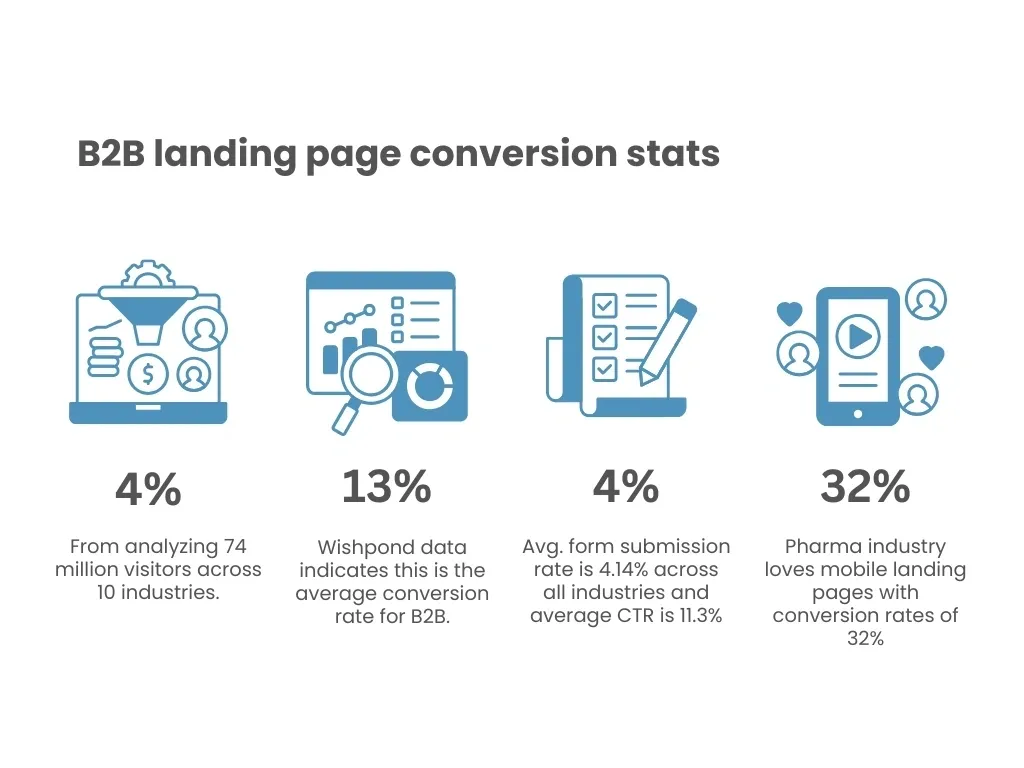
Your customers are waiting
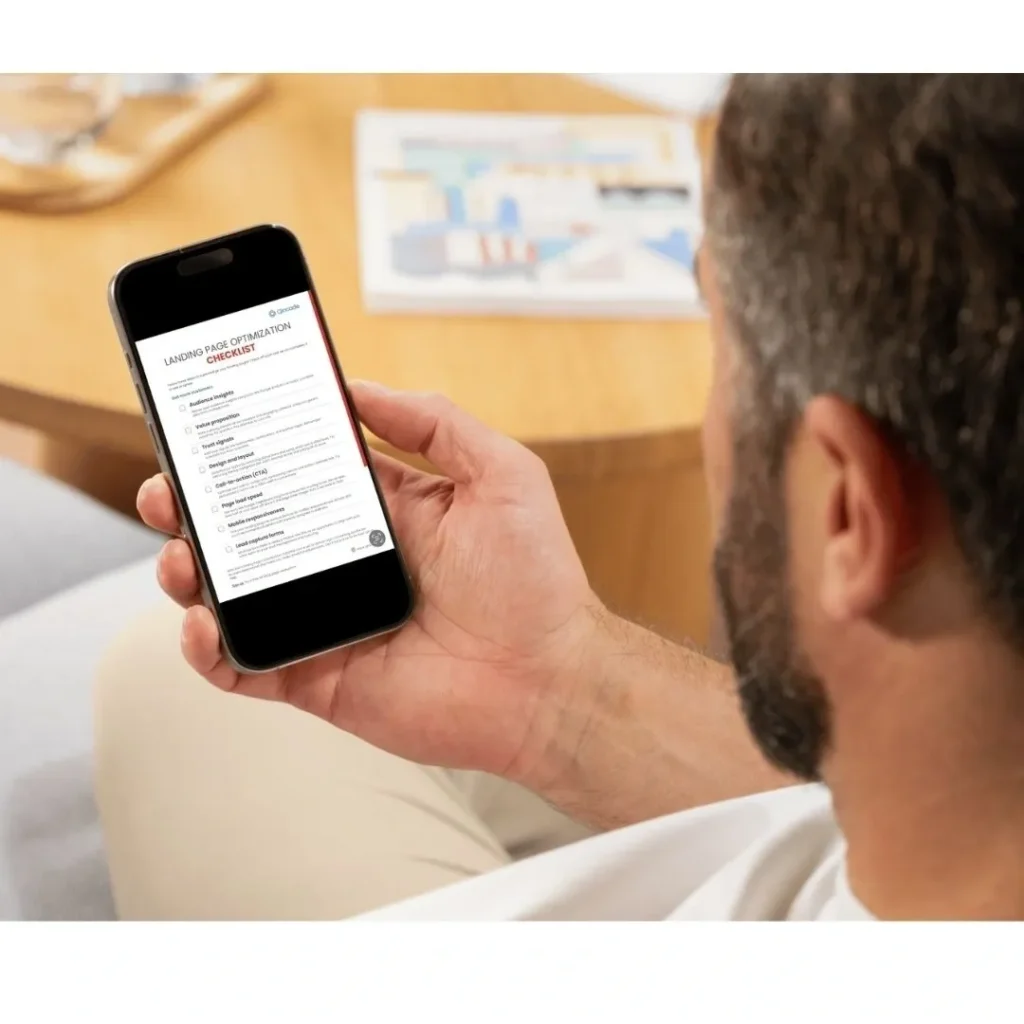
Your landing page is a reflection of your brand, your science, and your promise to potential customers. By applying these evidence-backed strategies, you’re not just optimizing a webpage – you’re growing trust in your brand and demonstrating its credibility.
With our handy one-page interactive Landing Page Optimization Checklist as your companion, you’re all set to deliver high-converting, audience-focused experiences by running through your key landing pages and making those powerful adjustments.
Ready to get started? Find it here.
And if you don’t have time to do this yourself, email us to claim your free landing page evaluation.
References
- Lead Generation Lessons from 4,000 Businesses
- 69+ Landing Page Stats for Better Conversions in 2024
- Why B2B Reviews Should Be An Essential Part Of Your Marketing Mix
- 15 Call-to-Action Statistics You Need to Know About to Increase Your Conversion Rate
- Why & how to focus on mobile page speed – Think with Google
- Site speed is (still) impacting your conversion rate
- Consumer Insights- Think with Google
- Conversion rate optimization case studies: 6 success stories and lessons learned
- What is the average conversion rate for a landing page?
- Landing Page Benchmark Report: Conversion Rates from 146 Landing Pages – Wishpond Blog
- Conversion benchmark report
- The Mobile Landing Page Report: An Inside Look at Conversion Rates Across Industries





